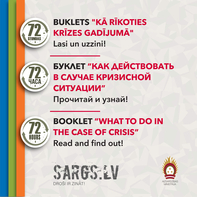Cesvaine Region
Cesvaine Region existed since 1 July 2009 and has been formed as a result of the administrative and territorial reform. Since 1 July 2021 Cesvaine is a part of Madona municipality. The biggest production enterprises in Cesvaine are the LLC "Cesvaines Piens" and the LLC "Nordtorf". There are several woodworking enterprises, milk and animal production farms, vegetable growers, beekeepers and tourism enterprises in the region. The town has the chief forestry, radio and television station, chemist's shops, the beauty centre with a swimming pool, a café and groceries.
Cesvaine is situated in Vidzeme Uplands, in Madona Region. The town has the territory of 511 ha, including a big rural territory, at the distance of 180 km to the east from Riga. The total area is 19 047 ha. The population is 1313 people (2019). Latvians make up 91% of population. The biggest rural centres are Grashi, Karkli, Karzdaba and Kraukli. Cesvaine received the rights of a town in 1991.
There are four educational institutions in the territory of the region; they are a secondary school, preschool educational institution "Brinumzeme", Music and Art School and a primary boarding school as well as a cultural centre, two libraries and a social care centre. Grashi Castle and Grashi children village are situated in Grashi. Cesvaine is known for the heritage of Adolf von Wulf, i.e. his palace. There is an old town with manor buildings around the palace; it includes a horse stable, a tea house, a pump house, a brewery and a forester's house. There is a park near the palace and the Sula River flows through the town.























